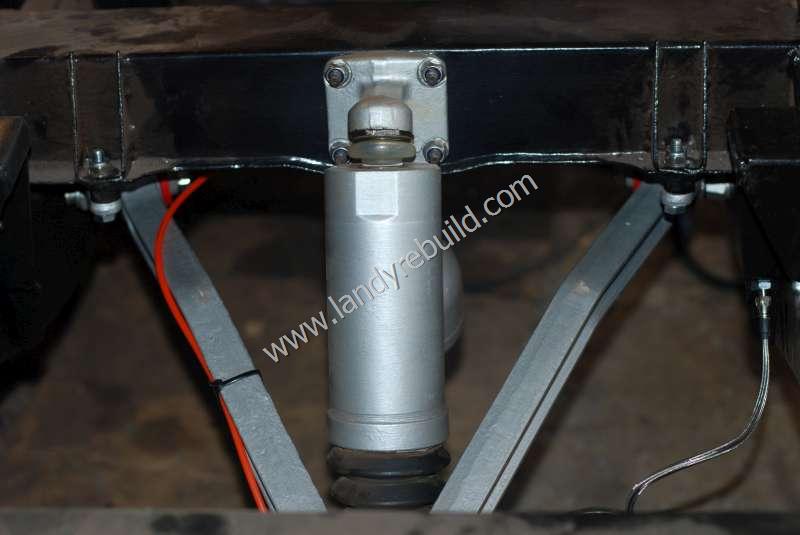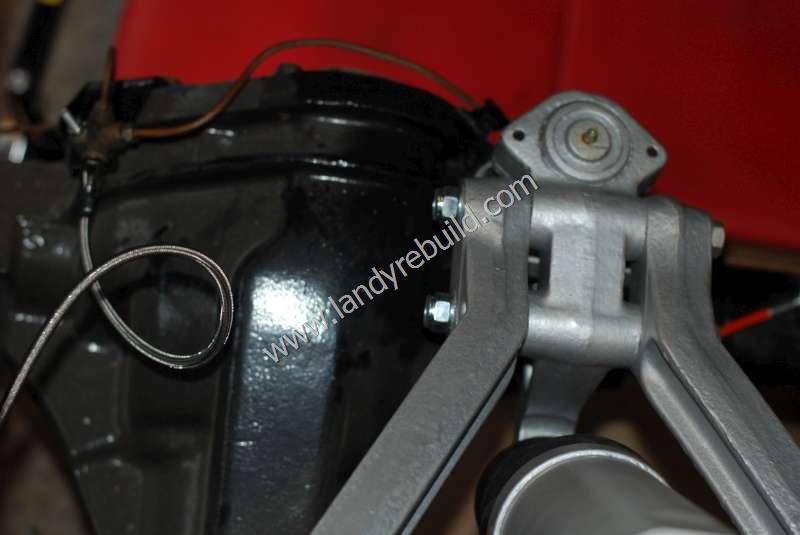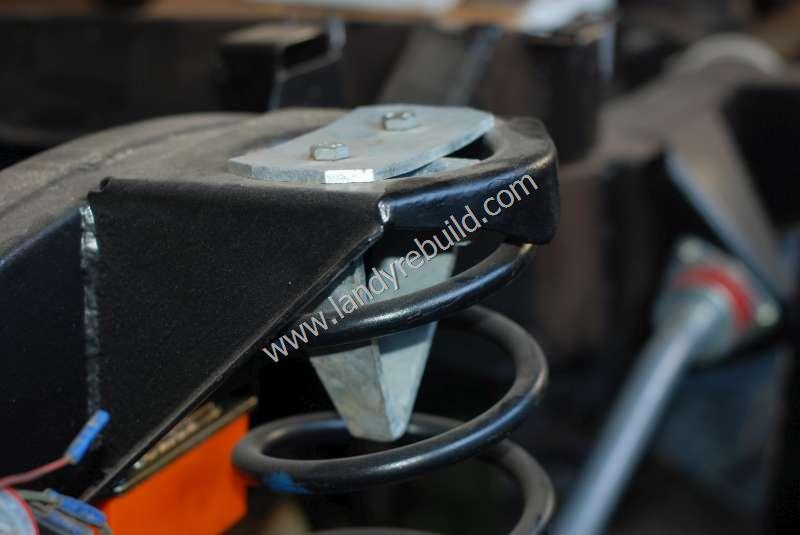With the rear axle reinstalled, it was now time to reconnect the Boge self-leveller and A-frame before reinstalling the rear body. The Boge and lower ball joint had already been renovated, so it was simply a matter of putting it in place and reinstalling the bolts.
Or so I thought.
I installed the top bolts easily enough, but the lower ones wouldn't line up!
Eventually I realised the problem lay with the angle of the axle compared to the chassis. So if you're reinstalling the A-frame, do it as follows:
First install the upper A-frame links and the upper Boge plate to the chassis. (The weight of the vehicle is taken up by the road wheels - in other words there's no need to lift or lower the axle).
Now install the pivot joint to the rear axle.
Then using your Hi-Lift jack under the rear crossmember (or you could use a trolley jack if you don't have a hi-lift) start jacking up the rear of the vehicle. Check the lower ball joint bolt holes frequently - the holes will start to line up.
Once the holes have lined up, install the lower bolts.
Remove the jack.
Now the rear brake line can be reconnected to the rear axle, as can the axle breather (I fed the free end into a convenient hole in the chassis crossmember to which the Boge upper plate attaches). I also took the opportunity to install some Gwyn Lewis dislocation cones at the top of the rear springs. I've seen rear springs disclocated whilst offroading, and these cones help the spring to seat itself again.
Testing the rear suspension involves driving the vehicle with a load in the back. The Boge unit compensates for loading the vehicle by restoring the normal ride height, and is effectively pumped up by the movement of the suspension. It has no effect if the vehicle is unladen.
To test the Boge, measure the clearance between the rear axle bump pad and the rubber bump stop at the front outer corner. It should exceed 67mm. If less than this, you probably need new springs. If the springs have been renewed and the distance is still less than 67mm, you need a new Boge unit.
To test the functionality of the unit, evenly load the rear of the vehicle with 650kg in weight, leave it for half an hour to settle, and measure the bump clearances with a driver on board. Then drive for about 5km over undulating roads and stop gently. The bump clearance should now average more than 45mm, and also be more than 10mm greater than the initial measurement. If it isn't, the Boge unit should be renewed.
Finally the rear trailing arms were installed, together with new Polybush suspension bushes. The rear trailing arms allow for an extra 2" axle travel (as long as the anti-roll bar is not fitted, of course! I won't be refitting the anti-roll bar to the 110 - will see how it performs in cornering).


